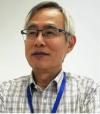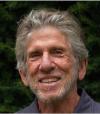Invited Speakers
We are proud to announce that the following speakers have accepted our invitation to deliver keynote addresses at the conference:
- Xu Daming (University of Macao, MACAO)
Plenary session 5: 16:00-17:00, Friday 11th August - Paul Kerswill (University of York, UK)
Plenary Session 1: 11:00-12:00, Monday 7th August - Daniel Long (Tokyo Metropolitan University, JAPAN)
Plenary session 2: 17:00-18:00, Monday 7th August - Jeff Siegel (University of New England, AUSTRALIA
Plenary session 4: 9:00-10:00, Thursday 10th August - Yukari Tanaka (Nihon University, JAPAN)
Plenary session 3: 9:00-10:00, Tuesday 8th August
Abstracts of invited speakers
-
Xu Daming (University of Macao, MACAO)
Demystifying the sociocultural identities of language and dialect

Plenary session 5: 16:00-17:00, Friday 11th August
[Abstract]
While the origin of human language is still shrouded in mystery, it is evident that modern languages are basically the results of language planning. Modern languages have generally developed through the espousing of modern states while linguistic work has tended to facilitate nation-building. However, as we enter the era of globalization, it may be worthwhile to explore the topic of de-politicization of language in order to increase the scientific values of linguistics and to uphold linguistic diversity as the future of humanity. To depoliticize language, it is necessary to have objective measurements of linguistic distances among different language varieties. Moreover, the sociocultural identities of language and dialect need to be demystified. While historical, cultural and sociopolitical factors all impact speakers' attitudes and even mutual intelligibility between language varieties, their direct causes seem to be language contact and acquisition rather than these historical, cultural and sociopolitical factors.
As shown by a number of analyses, the inter-subjectivity of linguistic distance tends to be based on the objective conditions of speech interaction and language acquisition. The forces shaping the context of speech interactions make a speech community, where language use, contact and acquisition take place. The language practices of the speech community lead to the emergence and maintenance of a linguistic variety, which is then often subjugated to the labeling of a "language" or a "dialect." To prevent overstretching the concepts of "language" and "dialect," the test of mutual intelligibility is necessary but needs to be complemented with the evaluation of effects of speech interactions. Perhaps the degree of difficulty in cross-variety acquisition is also relevant. Data from the variation studies of a number of Chinese varieties will be used to exemplify the above problems, and the related controversies over the language/dialect statuses of these varieties will be discussed.
Daming Xu is Invited Professor at Department of Chinese Language and Literature, Faculty of Arts and Humanities, University of Macau, where he teaches undergraduate and graduate courses and manages a research project entitled Language Contact and Identity Formation in Macau, Hong Kong and Zhuhai. Before joining University of Macau, Daming Xu was with Nanjing University, where he founded the China Center for Linguistic and Strategic Studies and the Sociolinguistics Laboratory. Daming Xu publishes mainly in Chinese and English, with some of the Chinese publications translated into Japanese, French, Korean and English. His English publications include A Survey of Language Use and Language Attitudes in the Singapore Chinese Community (co-authored with Chew Cheng Hai and Chen Songcen) and Industrialization and the Restructuring of Speech Communities in China and Europe (co-edited with Marinus van den Berg).
Paul Kerswill (University of York, UK)
Demography vs. identity in the formation of new urban contact dialects

Plenary Session 1: 11:00-12:00, Monday 7th August
[Abstract]
In North-west Europe, new varieties of established languages have rapidly emerged following particularly intense periods of migration (Wiese 2017). Recent arrivals acquire the local languages with varying levels of fluency, while the second generation acquire native competence. To varying degrees, the new varieties differ structurally from the established varieties, and the obvious question arises as to the mechanisms behind these changes. Importantly, these young people do not continue the supposedly unbroken line of dialect transmission across generations of 'native speakers'. This discontinuity is assumed to lie at the root of these new, phonologically and grammatically innovative contact dialects, sometimes labelled 'multiethnolects', which are vernaculars for children of both incomers and established families.
In my talk I want to explore the origins of these innovative features, which have variously been ascribed to learner varieties including interlanguage, other varieties of the language, and (where relevant) formal education. All of these factors are facilitated by the relative unavailability of a 'native' local dialect, both in the home and in the community. Grammatical and phonological restructuring have free rein.
These insights do not in themselves predict which features will dominate in the new dialect. A possible framework is Trudgill's (2004) deterministic model of new-dialect formation, by which, where the migrants establish entirely new settlements, the outcomes are predictable from the frequency with which particular dialect features are heard in the initial mix. The obvious problem with this is simply that the new contact varieties we are dealing with can only be formed after language shift has taken place. In these circumstances, a broader model is more parsimonious. A candidate is the Founder Principle as applied by Mufwene (1996) to explain the differences between African American English and Caribbean Creoles. This model is highly sensitive to demography and changes in demography, but also social relations among the different population groups represented. Added to this is the factor of the age at which features can, or cannot, be acquired.
Taking Multicultural London English as a case study (Cheshire et al. 2011), I will investigate the extent to which the Founder Principle is able to account for the features in this variety. However, such a mechanistic approach obscures linguistic usage and subjective factors. Speakers use the contact dialect as part of a linguistic repertoire (Sharma 2011), which is sensitive to context and speaker's stance, as well as being used more or less proactively for broader identity purposes.
In Europe, all urban contact dialects that have been studied are highly stigmatised beyond the communities that use them. At the same time, this stigma is attractive, and this allows members of the wider society to adopt, at least variably and for stylistic purposes, some of the features. This suggests the presence of a style-based conduit for the features to enter mainstream, majority language.
Paul Kerswill is Professor of Sociolinguistics at the University of York. His research has focused on migration and dialect contact in both Norway and Britain, including Bergen and the New Town of Milton Keynes. He has worked on projects on dialect levelling and on the emergence of Multicultural London English. His publications include work on the role of children in language change, the phonology of new dialects and the representation of youth language in the media. He has co-edited Dialect change: Convergence and divergence in European languages (with Frans Hinskens and Peter Auer, 2005) and the Sage Handbook of Sociolinguistics (with Ruth Wodak and Barbara Johnstone, 2010). With Jenny Cheshire, Eivind Torgersen and Sue Fox, he is co-author of 'Contact, the feature pool and the speech community: The emergence of Multicultural London English' (Journal of Sociolinguistics, 2011).
Daniel Long (Tokyo Metropolitan University, JAPAN)
Language Contact and Contact Languages involving Japanese

Plenary session 2: 17:00-18:00, Monday 7th August
[Abstract]
The overwhelming majority of pidgins and creoles which have been studied over the past couple of
centuries have had European language as one of the source languages (usually
the superstrate). In this talk I will examine some lesser known contact languages in which
Japanese has played a role. Some of
these have been researched, while for others the available information is quite
limited. These include early reports of a pidginized Ainu used a trade language, 19th century Yokohama Pidgin Japanese, pidginized Malay used by pearl divers in early 20th century Australia, 20th century Japanese-lexifier creoles in Taiwan, post-World War II Bamboo English, the Ogasawara (Bonin Islands) Mixed Language, Okinawan Uchiyamatu-guchi and others. I will discuss methodologies for contact language research and examine ways in which whether research into these "non-Western" contact varieties can contribute to the on-going effort to expand the study of contact languages beyond the traditional limits of merely pidgins and creoles.
Daniel Long is Professor of Japanese linguistics at Tokyo Metropolitan University and focuses on language contact issues and fieldwork on natural language acquisition in regional communities in and outside of Japan. His publications include English on the Bonin (Ogasawara) Islands, Japanese Sociolinguistics Illustrated, Handbook of Perceptual Dialectology as well as many books and articles in Japanese.
Jeff Siegel (University of New England, AUSTRALIA)
Acquisition and dialect change: An overview

Plenary session 4: 9:00-10:00, Thursday 10th August
[Abstract]
Studies of dialect change often concentrate on the spread of innovations. This talk, however, is about the origins of some innovations themselves. It focusses on contact-induced dialect change - where contact between existing dialects of one language, or between a particular dialect of one language and another language, or between two different languages, leads to innovations that result in the development of a new dialect or substantial change in an existing dialect. Such innovations in contact situations may be the result of incomplete acquisition by adults - either second language acquisition (SLA) or second dialect acquisition (SDA). Evidence of acquisition processes in the changed dialects can be seen not only in simplification (reduction and regularisation), but also in overextension of existing rules and transfer features from the first dialect or language. The talk will begin by demonstrating these processes in studies of SLA and SDA. Then it will go on to present a survey of instances of dialect change that could be attributed to such acquisition processes. Examples will be presented from a wide range of varieties, including colonial dialects (e.g. Australian English), indigenised L2 varieties (e.g. Singapore Colloquial English), immigrant koines (e.g. Fiji Hindi) and new urban dialects (e.g. Tripolitan Arabic).
Jeff Siegel got his PhD at the Australian National University in 1985. Since then, has taught linguistics at the University of the South Pacific and the University of New England in Australia, where he is Emeritus Professor. For two years he was also the foundation director of the Charlene Sato Center for Pidgin, Creole and Dialect Studies at the University of Hawai'i . Jeff's main area of research has been on language contact, concentrating on the origins of pidgins, creoles and new dialects, and on the use of these varieties in formal education. Recently, he has changed his focus to language documentation, working on Nama, a language of southern New Guinea. He is author of The Emergence of Pidgin and Creole Languages (OUP, 2008) and Second Dialect Acquisition> (CUP, 2010).
Yukari Tanaka (Nihon University, JAPAN)
"The "Dialect Cosplay" Phenomenon: Detaching Regional Dialects from Geographical Localities

Plenary session 3: 9:00-10:00, Tuesday 8th August
[Abstract]
In today's Japanese linguistic community, regional dialects are recognized as sources of positive value. Modern government policies to establish Standard Japanese aimed to eradicate regional dialects, and dialects were stigmatized in Post-WWII Japan, until the country's rapid economic growth slowed in the 1970s. However, a drastic change took place in the 1980s, when the expansion of television viewership and other factors made Standard Japanese a shared, familiar language used throughout Japan. The first generation of mass-scale television viewers, born in the 1960s, were able to operate in Standard Japanese with ease. When they became young adults, "dialects" began to gain social value as a special type of language. Later, with the popularization of "typed language" (as opposed to spoken and written language) through the spread of the Internet, "dialects" began attracting attention as a means for expressing emotions. Whereas regional dialects in the past were conventional languages spoken in specific localities, the past few decades have added new uses of dialects that are based on linguistic stereotypes. Communication through the use of "virtual dialects," which alter and rework the real dialects of everyday life, have become widespread. One component of such phenomena is "dialect cosplay," which has become conspicuous since the 2000s.
Dr. Yukari TANAKA is a professor of Japanese linguistics in the College of Humanities and Sciences, Nihon University, Japan (April 2006-Present). Born in Atsugi City, Kanagawa Prefecture in 1964, she studied in the Department of Literature, Waseda University (B.A.), and the Graduate School of Literature, Waseda University (M.A. & Ph.D.). Her previous fulltime positions include: reporter at Yomiuri Shimbun Tokyo Office; lecturer at the Language and Communication Research Center, University of Shizuoka; and associate professor at Nihon University.
Dr. TANAKA's research centers on social linguistics in Japanese communities. Recently, her research has focused on Japanese regional dialects, particularly concerning "virtual dialects" and the linguistic landscapes of Tokyo.
Her selected publications include: Hōgen-moe!?: Bācharu Hōgen wo yomitoku (Enthralled by Dialects!?: Decoding Virtual Dialects), Tokyo: Iwanami Shoten, 2016; "Hōgen kosupure" no jidai: Nise Kansai-ben kara Ryōma-go made (The Era of Dialect Cosplay: From Imitation Kansai-ben to Fake Tosa-ben), Tokyo: Iwanami Shoten, 2016; and Shutoken ni okeru gengo dōtai no kenkyū (Language Dynamics in the Tokyo Metropolitan Area), Tokyo: Kasama Shoin, 2010.
She received the 22nd Academic Publishing Award (2012) from the Kōchi City Foundation for Cultural Activities for her "Hōgen kosupure" no jidai, as well as the 1st Award of Excellence in Support of Research on Language, Culture, and Education, Individual Research (2007) from the Hakuhō Foundation for her research, entitled "Wakariyasui jōhō dentatsu' to wa nani ka: tagengoka to fukushi no kanten kara" (What Makes Information Transfer Accessible: From the Perspective of Multilingualization and Welfare).
The College of Humanities and Sciences, Nihon University [Japanese] https://www.chs.nihon-u.ac.jp/ [English] https://www.chs.nihon-u.ac.jp/english/ Department of Japanese Language and Literature [Japanese] http://www.chs.nihon-u.ac.jp/jp_dpt/ TANAKA,Yukari _Tantō Jugyō Hōkoku [Japanese] http://www.chs-jp.info/tnk/
This page was last updated: 2017.7.31
Last modified 2017. 09. 19
